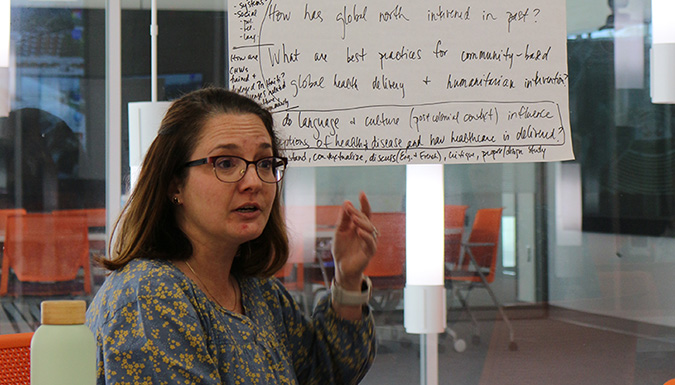- OTEI Home
- Clemson Resources
- Request OTEI Services
- Events and Programs
- Teaching Guides
Evidence-Based Teaching Strategies

Why Evidence-Based Teaching?
Teachers contribute to student learning through building rapport with students and through teaching clarity.
Clarity and Rapport are key foundations for effective teaching. The ten areas below contribute to clarity in organization, conveying ideas, transparency in learning goals, building rapport through sharing ideas with students, checking in with students regularly and encouraging peer interaction. These ten areas of practice can increase student learning significantly. Through focus on these areas, teachers can help arrange for learning, build on students thinking, assist students to make connections and assess for learning.
Evidence-Based Teaching Strategies Top 10
1. State clear learning goals repeatedly, so students have a clear idea of where they are going and what it will look like when they get there. This is a practice that creates transparency in learning and teaching.
2. Share and model concepts to explain and then demonstrate how students will do a task, whether a physical or thinking task. Sharing and modeling looks different in each discipline. For some, that may be "thinking out loud" to show students how experts process or it may be doing a physical demonstration.
3. Check for student understanding by asking for feedback from students in various ways, regularly. Research shows that this habit of asking for student feedback has more impact for learning than giving students feedback. Ask what students what they understand and how the course and class sessions are structured helps them learn. Resources that you can import into Canvas are available for Clemson instructors. Search "clemson teaching" in the Commons.
4. Give feedback to students regularly, on work that is a low stakes grade, in a feedback loop. Think "homework", classwork and quizzes. Encourage students to evaluate their own assessment results (see below).
5. Record information in graphical ways by both instructor and students for visual learning and deeper processing. This area includes adding key, clear visuals to presentations (visuals are easier to remember), creating graphs, charts, and diagrams and having students create their own.
6. Allow repeat and spaced practice through assigned work out of class and work during class with opportunities for feedback to and from students. See number four above. Repeat practice spaced over time, such as having students recall information from earlier in the course, helps solidify their learning.
7. Create opportunities for peer-to-peer learning so that students assist each other in understanding concepts. The basis of excellent "group work" is work that is meaningful for students, in which they can all contribute to each others' learning. In large classes, this can be accomplished by "pair-share" questions they discuss with their immediate neighbors.
8. Build in time to succeed by allowing varying time per unit, in particular to account for learning difficult concepts. While difficult to accomplish "on the fly," instructors who have taught the content before can provide students more time on difficult concepts. Consider examining the "threshold concepts" in your content area.
9. Teach strategies for learning with general resources and techniques specific to a discipline. Encourage students to us resources from the Academic Success Center and the libraries and provide information on ways to learn in the particular content area that you are teaching. Students today often have gaps in their knowledge of study techniques, such as effective note-taking, approaches to time management and test preparation.
10. Nurture metacognition by prompting students to ask how they are thinking about a subject. This area is getting a lot of attention in higher education currently. Encouraging students to assess their own learning through activities and homework helps them take responsibility for their learning and balances out the "teaching and learning" responsibilities.
Looking for additional guidance in implementing these strategic areas? Get more insight:
-
References
For data behind this list, see John Hattie (2008) Visible Learning: A Synthesis of Over 800 Meta-Analyses Relating to Achievement; Robert Marzano ( 2004) Classroom Instruction That Works: Research-based Strategies for Improving Student Achievement.
Top 10 list adapted in part from The Australian Society for Evidence-Based Teaching, http://www.evidencebasedteaching.org.au/
2016 OTEI
